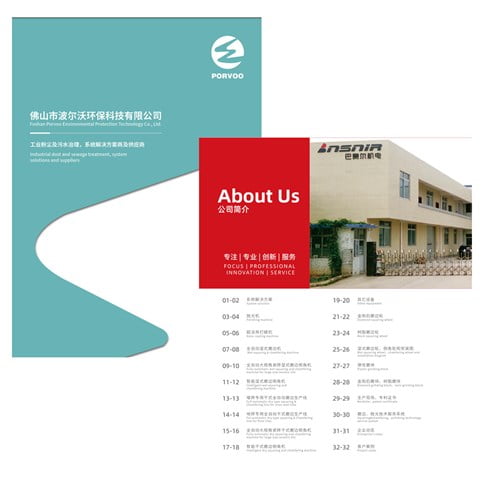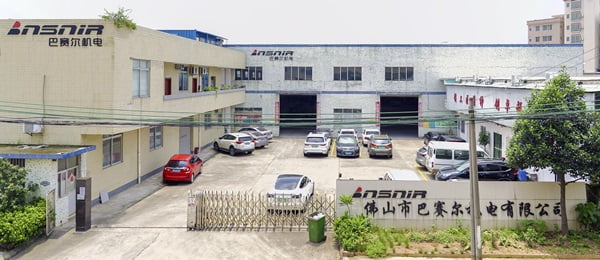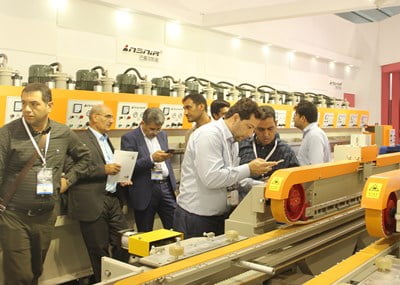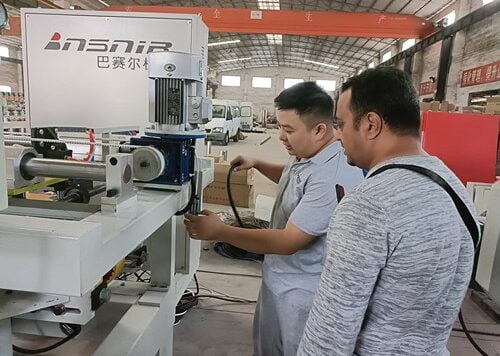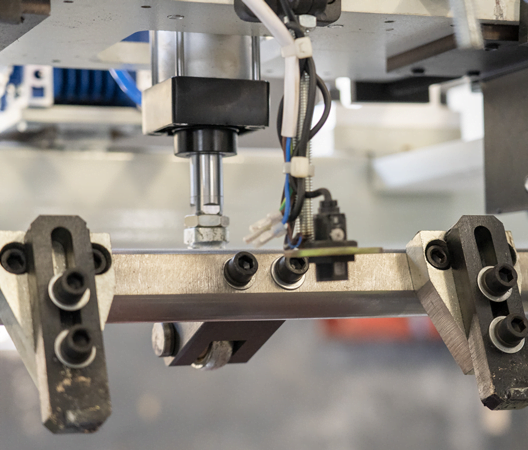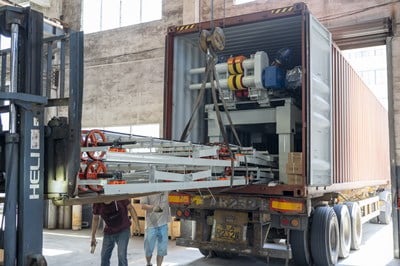The ceramic tile industry faces a critical challenge: machine maintenance neglect costs manufacturers an average of $50,000 annually in unexpected downtime and emergency repairs. When your BASAIR Tech tile line polishing equipment suddenly fails during peak production, you’re not just losing money—you’re compromising delivery schedules, frustrating customers, and potentially damaging your reputation in an increasingly competitive market.
This cascading effect becomes even more devastating when you consider that 78% of equipment failures in tile production lines are preventable through proper maintenance protocols. The ripple effects include overtime costs for repair crews, expedited shipping fees for replacement parts, and the hidden costs of stressed machinery operating beyond optimal parameters.
The solution lies in implementing a comprehensive preventive maintenance strategy specifically designed for tile line polishing machines. This guide provides industry-tested protocols, expert insights, and practical frameworks that have helped manufacturers reduce unplanned downtime by up to 85% while extending equipment lifespan by 40%.
What Are the Fundamental Principles of Tile Polishing Machine Maintenance?
Understanding the core principles behind effective equipment care begins with recognizing that tile line polishing machines operate under extreme conditions. These systems process thousands of ceramic tiles daily, subjecting mechanical components to constant friction, heat, and abrasive materials.
Understanding Machine Operating Conditions
Tile polishing machines function in environments where ceramic dust, water, and chemical additives create a challenging operational landscape. The polishing heads rotate at speeds exceeding 1,500 RPM while maintaining precise pressure contact with tile surfaces. This intensive operation generates significant heat and mechanical stress on bearings, drive systems, and polishing pads.
According to industry research from the Ceramic Manufacturing Association, machines operating without proper maintenance protocols experience 60% more bearing failures and 45% higher motor replacement rates compared to well-maintained equipment.
Core Maintenance Philosophy
The foundation of successful machine servicing rests on three pillars: prevention, prediction, and precision. Prevention involves scheduled maintenance tasks that address wear before failure occurs. Prediction utilizes monitoring systems to identify potential issues early. Precision ensures maintenance activities are performed to exact specifications using appropriate tools and techniques.
In our experience working with ceramic tile manufacturers, facilities that adopt this three-pillar approach typically see ROI improvements of 300% on their maintenance investments within the first year.
| Maintenance Pillar | Key Activities | Expected Outcome |
|---|---|---|
| Prevention | Scheduled lubrication, filter changes, calibration | 70% reduction in unexpected failures |
| Prediction | Vibration analysis, temperature monitoring, oil analysis | 50% decrease in major component replacement |
| Precision | Torque specifications, alignment procedures, quality parts | 85% improvement in maintenance effectiveness |
Critical Component Hierarchy
Not all machine components require equal attention. Critical components include drive motors, polishing head assemblies, water circulation systems, and conveyor mechanisms. Understanding this hierarchy helps prioritize maintenance resources and scheduling.
The polishing head assembly, for instance, directly impacts tile quality and typically requires daily inspection, while drive motor maintenance might occur monthly. This risk-based approach ensures maintenance efforts focus where they generate maximum benefit.
How Should You Conduct Daily and Weekly Inspections?
Systematic inspection protocols form the backbone of effective preventive maintenance programs. These inspections serve as early warning systems, identifying potential problems before they escalate into costly failures.
Daily Inspection Checklist
Daily inspections should focus on operational indicators that change rapidly. Start each production shift by checking polishing pad condition, water flow rates, and unusual vibrations or noises. Document findings using standardized checklists that track trends over time.
Visual inspection of the line polishing machine should include checking for loose bolts, excessive wear on moving parts, and proper alignment of conveyor systems. Pay particular attention to areas where ceramic dust accumulation might indicate seal failures or ventilation issues.
Weekly Comprehensive Assessments
Weekly inspections delve deeper into system performance metrics. Measure motor temperatures, check belt tension, and verify calibration settings. These assessments typically require 2-3 hours but provide valuable data for trend analysis.
A major tile manufacturer in Italy implemented weekly thermal imaging surveys of their polishing equipment, discovering that early detection of bearing temperature increases reduced catastrophic failures by 90%. This proactive approach identified problems an average of 6 weeks before traditional inspection methods.
Documentation and Trend Analysis
Effective inspection programs generate data that reveals patterns and predicts future maintenance needs. Digital maintenance management systems can track inspection results, automatically flagging deviations from normal operating parameters.
What Cleaning Protocols Ensure Optimal Performance?
Proper cleaning protocols extend far beyond basic housekeeping—they’re essential for maintaining precision and preventing premature component wear in polishing line maintenance.
Daily Cleaning Procedures
End-of-shift cleaning should remove ceramic dust and residue from critical components. Use compressed air to clear ventilation systems, but avoid blowing dust into bearings or electrical components. Water-based cleaning requires careful attention to drainage, as standing water can cause corrosion in sensitive areas.
The cleaning process for polishing heads requires particular attention. Remove accumulated ceramic particles that can cause surface irregularities on subsequent tiles. Use specialized cleaning solutions that dissolve polishing compound residues without damaging pad materials.
Deep Cleaning Protocols
Monthly deep cleaning sessions involve partial disassembly of accessible components. Remove and clean polishing pads, inspect water distribution systems, and clean conveyor belt undersides. This process typically requires 6-8 hours but significantly extends component life.
During deep cleaning, inspect seals and gaskets for wear patterns that might indicate misalignment or excessive pressure. Replace worn seals proactively to prevent contamination of lubrication systems and bearing assemblies.
Chemical Compatibility Considerations
Cleaning chemicals must be compatible with machine materials and environmental regulations. Avoid acidic cleaners on aluminum components, and ensure thorough rinsing to prevent chemical residue buildup. Some facilities utilize ultrasonic cleaning baths for small precision components, achieving superior cleanliness levels.
How Do You Maintain Critical Components Effectively?
Critical component maintenance requires specialized knowledge and techniques unique to tile polishing equipment. Each component system has specific requirements that directly impact overall machine performance.
Polishing Head Maintenance
Polishing heads represent the most critical interface between machine and product. Proper maintenance begins with understanding pad wear patterns, which indicate alignment issues, pressure inconsistencies, or contamination problems.
Replace polishing pads when wear indicators show 75% of original thickness remaining. Continuing operation beyond this point risks surface quality issues and increased stress on drive mechanisms. Head alignment should be checked monthly using precision measurement tools.
A case study from a Spanish ceramic manufacturer revealed that implementing systematic polishing head maintenance reduced tile rejection rates from 3.2% to 0.8% while extending head life by 60%.
Drive System Care
Drive systems require regular lubrication, alignment checks, and belt tension adjustments. Motor bearings typically require regreasing every 2,000 operating hours, but this interval varies based on operating conditions and ambient temperature.
Belt tension should be checked weekly using tension meters rather than visual inspection. Proper tension extends belt life by 40% and reduces energy consumption by 8-12%. Over-tensioning increases bearing loads, while under-tensioning causes slippage and heat generation.
Water System Maintenance
Water circulation systems require attention to prevent scaling, bacterial growth, and filtration problems. Monthly water quality testing ensures chemical balance within acceptable ranges for tile production.
Filter replacement intervals depend on water hardness and production volume. Ceramic tile facilities typically replace primary filters every 30-45 days, with secondary filters lasting 60-90 days. Monitoring pressure differential across filters provides early warning of clogging conditions.
| Component | Maintenance Frequency | Key Indicators | Replacement Criteria |
|---|---|---|---|
| Polishing Pads | Daily inspection | Wear patterns, thickness | 75% original thickness |
| Drive Belts | Weekly tension check | Tension meter readings | 10% stretch or visible cracking |
| Water Filters | Monthly assessment | Pressure differential | 50% flow reduction |
| Bearings | 2,000-hour intervals | Temperature, vibration | Temperature increase >20°F |
What Troubleshooting Strategies Minimize Downtime?
Effective troubleshooting requires systematic approaches that quickly identify root causes rather than addressing symptoms. Developing troubleshooting expertise significantly reduces machine maintenance costs and production disruptions.
Systematic Diagnostic Approach
Begin troubleshooting with the most likely causes based on symptoms observed. Vibration issues often indicate bearing problems or misalignment, while quality problems might suggest polishing pad wear or water system issues. Create decision trees that guide technicians through logical diagnostic sequences.
Experienced maintenance professionals recommend the “5-why” technique for complex problems. This method involves asking “why” five times to drill down to root causes rather than quick fixes that mask underlying issues.
Common Problem Patterns
Tile polishing machines exhibit predictable failure patterns based on operating conditions and maintenance history. Bearing failures typically occur after 8,000-12,000 hours of operation, while polishing pad life varies from 200-500 hours depending on tile hardness and surface finish requirements.
Understanding these patterns helps maintenance teams prepare for scheduled replacements and stock appropriate spare parts. Predictive maintenance programs can extend these intervals by 20-30% through optimal operating conditions and proactive care.
Emergency Response Protocols
Despite best efforts, emergency situations occasionally arise. Effective emergency response protocols minimize downtime and prevent secondary damage. Keep emergency contact information readily available, maintain critical spare parts inventory, and establish relationships with qualified service technicians.
The specialized polishing equipment used in ceramic tile production requires specific expertise for major repairs. Attempting complex repairs without proper training can worsen problems and void warranties.
How Can Preventive Maintenance Strategies Reduce Costs?
Implementing comprehensive preventive maintenance strategies transforms maintenance from a cost center into a profit generator. The key lies in understanding the economic relationships between maintenance investment and operational performance.
Cost-Benefit Analysis Framework
Preventive maintenance costs typically represent 15-20% of total maintenance budgets but prevent 70-80% of potential failures. This dramatic leverage makes preventive maintenance one of the highest-ROI investments in manufacturing operations.
Calculate preventive maintenance ROI by comparing scheduled maintenance costs against emergency repair expenses, production losses, and quality impacts. Most facilities discover that every dollar invested in preventive maintenance saves $3-5 in emergency repairs and lost production.
Scheduling Optimization
Optimal maintenance scheduling balances component needs with production requirements. Coordinate major maintenance activities during scheduled downtime to maximize production efficiency. Some facilities implement “maintenance windows” during shift changes or weekends for non-critical activities.
Advanced scheduling systems consider component life cycles, production schedules, and resource availability to optimize maintenance timing. These systems have helped manufacturers reduce maintenance-related downtime by 35-40% while improving maintenance quality.
Spare Parts Management
Effective spare parts management ensures critical components are available when needed without excessive inventory costs. Analyze failure patterns to identify fast-moving items that require local stock versus slow-moving items suitable for supplier partnerships.
Implement ABC analysis for spare parts inventory, focusing resources on high-value, critical components while minimizing investment in low-impact items. This approach typically reduces inventory costs by 25% while improving parts availability.
What Are the Long-Term Benefits and ROI Considerations?
Long-term maintenance planning extends beyond immediate operational needs to encompass strategic business objectives. Understanding these broader implications helps justify maintenance investments and guide operational decisions.
Equipment Lifespan Extension
Proper maintenance extends equipment life by 40-60% compared to run-to-failure approaches. This extension defers capital replacement costs while maintaining production capacity. For tile polishing equipment costing $200,000-500,000, this represents substantial financial benefits.
A comprehensive maintenance program typically costs 2-3% of equipment value annually but can extend useful life from 10-12 years to 15-18 years. This extension provides additional production capacity worth millions of dollars over the equipment’s lifetime.
Performance Optimization
Well-maintained equipment operates at peak efficiency, reducing energy consumption and improving product quality. Energy savings alone can justify maintenance investments, as polishing equipment typically consumes 50-100 kW during operation.
Quality improvements from proper maintenance reduce waste, rework, and customer complaints. Facilities report that systematic maintenance programs improve first-pass quality rates by 15-25%, directly impacting profitability.
Consideration Factors
While preventive maintenance offers substantial benefits, implementation requires skilled personnel and systematic approaches. Facilities lacking maintenance expertise may need training investments or service partnerships to achieve optimal results. Additionally, some preventive maintenance activities require production interruptions that must be carefully managed.
The initial investment in maintenance systems, training, and spare parts inventory can be substantial, requiring 6-12 months to demonstrate positive ROI. However, long-term benefits far outweigh these initial costs for most operations.
What Future Trends Are Shaping Maintenance Practices?
The future of machine maintenance in tile polishing applications increasingly incorporates digital technologies and predictive analytics. Understanding these trends helps facilities prepare for tomorrow’s maintenance challenges and opportunities.
Digital Integration and IoT
Internet of Things (IoT) sensors provide real-time monitoring of critical parameters like temperature, vibration, and energy consumption. These systems enable predictive maintenance strategies that identify problems weeks before traditional methods.
Advanced analytics platforms process sensor data to identify patterns and predict failures with 90-95% accuracy. This capability transforms maintenance from reactive to proactive, substantially reducing unplanned downtime.
Artificial Intelligence Applications
AI-powered maintenance systems learn from historical data to optimize maintenance schedules and procedures. These systems consider production schedules, weather patterns, and operator behavior to provide personalized maintenance recommendations.
Machine learning algorithms can identify subtle patterns in equipment behavior that human operators might miss. Early adopters report 20-30% improvements in maintenance efficiency using AI-guided approaches.
Sustainability Considerations
Environmental regulations increasingly influence maintenance practices. Facilities must balance maintenance effectiveness with environmental impact, choosing biodegradable lubricants and minimizing waste generation.
Sustainable maintenance practices often align with cost reduction goals, as efficient equipment operates with lower environmental impact. This alignment creates win-win scenarios for manufacturers focused on both profitability and environmental responsibility.
Implementing these comprehensive maintenance strategies transforms your tile polishing equipment from a potential liability into a reliable profit generator. The investment in systematic maintenance pays dividends through reduced downtime, improved quality, and extended equipment life. As the ceramic tile industry continues evolving, facilities that master these maintenance principles will maintain competitive advantages while building sustainable operations for the future.
What specific maintenance challenges are you facing in your facility, and how might these strategies address your unique operational requirements?
Frequently Asked Questions
Q: What is an Essential Maintenance Guide for Tile Line Polishing Machines?
A: An Essential Maintenance Guide for Tile Line Polishing Machines is a comprehensive resource that outlines the necessary steps and practices for maintaining tile line polishing machines effectively. This guide ensures that machines operate efficiently, extending their lifespan and maintaining optimal performance in tile polishing.
Q: Why is regular maintenance crucial for tile line polishing machines?
A: Regular maintenance is vital for tile line polishing machines as it prevents wear and tear, reduces downtime, and ensures consistent results. Properly maintained machines can improve productivity and reduce the risk of accidents or damage to both the machine and the tile surfaces being polished.
Q: What are the key components to inspect during daily maintenance of a tile line polishing machine?
A: When inspecting a tile line polishing machine, pay close attention to:
- Power cords and plugs for any signs of damage.
- Vacuum systems to ensure they are functioning correctly.
- Polishing belts or pads for wear and tear.
- Water hoses for any blockages or leaks.
Regular checks prevent operational issues and ensure safety.
Q: How do I properly clean and store a tile line polishing machine after use?
A: After using a tile line polishing machine, thoroughly clean the machine and its surroundings. Empty and clean any water tanks, and dry the machine to prevent rust. Store the machine in a secure location to protect it from damage and ensure it remains in good working condition for future use.
Q: What are some common issues that can arise if tile line polishing machines are not properly maintained?
A: Common issues with poorly maintained tile line polishing machines include:
- Reduced performance due to worn-out parts.
- Increased risk of accidents from malfunctioning components.
- Higher maintenance costs over time.
Regular maintenance helps prevent these problems and ensures smooth operation.
Q: How can following an Essential Maintenance Guide benefit my business operations?
A: Following an Essential Maintenance Guide for tile line polishing machines can benefit your business by increasing efficiency, reducing operational costs, and improving overall quality. Well-maintained machines lead to higher customer satisfaction and can enhance your business’s reputation by delivering consistent results.
External Resources
- Polisher Floor Machine Operator’s Manual – This comprehensive manual details essential operation and maintenance steps for floor polishing machines, including daily routines, troubleshooting, and parts replacement to ensure effective use and longevity.
- Horizon Tile Cleaning Machine Maintenance Guide – Offers step-by-step maintenance instructions specifically for tile cleaning machines, covering daily, weekly, and monthly care procedures for optimal performance.
- Cleaning and Maintenance Manual – Armor-Tile – Provides an English-language maintenance manual focused on cleaning and upkeep best practices for tile surfaces, with practical advice for maintaining machinery and ensuring optimal tile appearance.
- Cleaning and Maintenance of Tile and Stone – Covers fundamental cleaning and maintenance processes for tile and stone, including recommended cleaning agents and stepwise procedures relevant to machine-assisted maintenance.
- Tile Care & Maintenance Guide – Offers specific guidance for the regular care and maintenance of ceramic and porcelain tile using both manual and machine-assisted techniques.
- Tile Polishing Maintenance Tips and Guide – This resource provides practical advice and tips for maintaining polished tile floors, including machine use, routine maintenance, and troubleshooting common issues.

